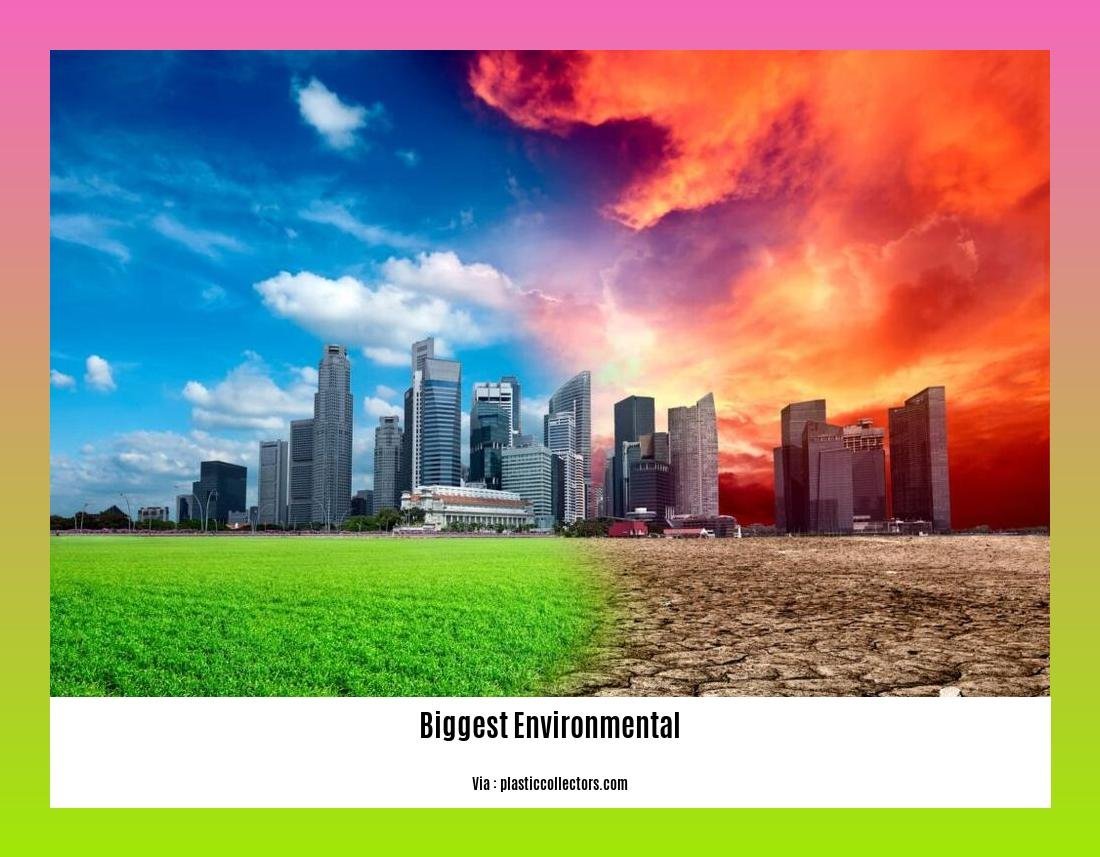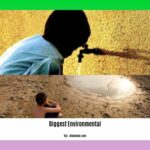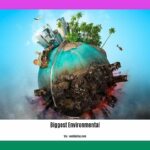Investigating the Biggest Environmental Problems in the Philippines: From Deforestation to Climate Change.
In a country known for its natural beauty and rich biodiversity, the Philippines is currently grappling with a host of environmental issues that are threatening its ecological balance. From rampant deforestation and illegal logging to the mounting pollution levels and the pressing impacts of climate change, the challenges faced by the country are substantial. In this article, we delve into the biggest environmental problems in the Philippines, exploring their root causes and highlighting the urgent need for action in order to secure a sustainable future for this diverse nation.
Key Takeaways:
- Deforestation is a major environmental problem in the Philippines, driven by illegal logging, agricultural expansion, and urbanization. This leads to soil erosion, greenhouse gas emissions, loss of biodiversity, and impacts on local communities and indigenous peoples.
- Water pollution is a pressing concern in the country, caused by industrial activities, improper waste management, and inadequate sanitation. It affects aquatic ecosystems, poses risks to human health, and hinders sustainable economic development.
- Major cities in the Philippines, like Metro Manila, suffer from high levels of air pollution due to vehicle emissions, industrial activities, and the burning of fossil fuels. This results in respiratory illnesses, reduced air quality, and climate change impacts.
- The unsustainable extraction of natural resources, including minerals, fossil fuels, and marine resources, leads to their rapid depletion in the Philippines. This disrupts ecosystems, contributes to habitat loss, and affects local livelihoods and indigenous communities.
- The Philippines is highly vulnerable to climate change impacts such as rising sea levels, extreme weather events, and coral bleaching. These pose significant threats to coastal communities, agriculture, biodiversity, and national resilience.
- Inadequate waste management practices, including improper disposal and limited recycling facilities, contribute to the country’s waste problem. This leads to environmental pollution, health hazards, and challenges in managing solid waste.
Please refer to reputable local or international sources for further in-depth analysis and statistics on the biggest environmental problems in the Philippines.
Biggest Environmental Problems in the Philippines
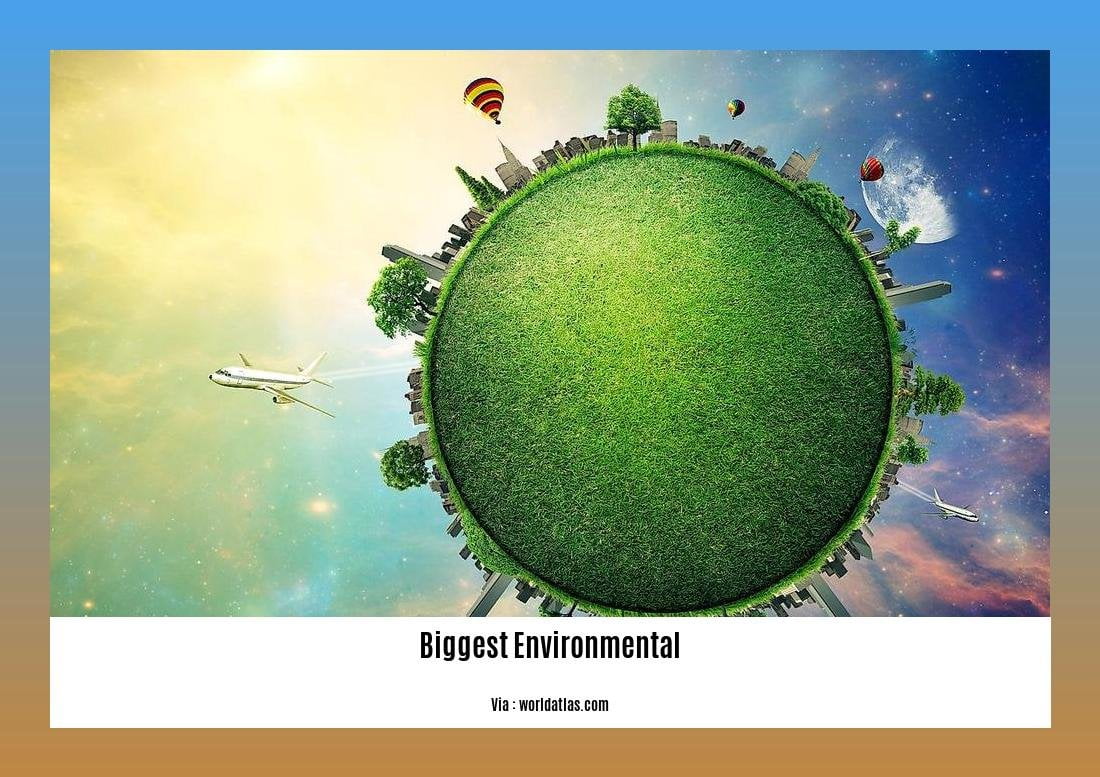
The Philippines, known for its beautiful landscapes and rich biodiversity, is facing significant environmental challenges that threaten its natural resources and communities. From deforestation to climate change, these problems require urgent attention and collective action. In this article, we will delve into the biggest environmental problems in the Philippines and explore their causes, impacts, and potential solutions.
Deforestation: A Threat to Biodiversity and Communities
Deforestation is one of the most pressing environmental problems in the Philippines. Every year, large areas of forests are lost due to illegal logging, agricultural expansion, and urbanization. This rampant destruction has severe consequences, affecting the country’s biodiversity and communities. Soil erosion, increased greenhouse gas emissions, and the loss of habitat for various species are just a few of the detrimental effects of deforestation.
Water Pollution: A Hazard to Ecosystems and Health
Water pollution poses a significant threat to the Philippines’ aquatic ecosystems and the health of its people. Industrial activities, improper waste management, and inadequate sanitation systems contribute to the contamination of rivers, lakes, and coastal areas. This pollution not only harms marine life and ecosystems but also poses risks to human health, hindering sustainable economic development.
Air Pollution: Suffocating Cities and Climate
Major cities in the Philippines, such as Metro Manila, suffer from high levels of air pollution. Vehicle emissions, industrial activities, and the burning of fossil fuels all contribute to the release of harmful pollutants into the air. This not only leads to respiratory illnesses among the population but also reduces air quality and exacerbates the impacts of climate change.
Natural Resource Depletion: Unsustainable Extraction and Consequences
The unsustainable extraction of natural resources in the Philippines, including minerals, fossil fuels, and marine resources, has led to their rapid depletion. Overexploitation disrupts ecosystems, contributes to habitat loss, and affects local livelihoods and indigenous communities. It is crucial to adopt responsible and sustainable practices to ensure the long-term health of the environment and the well-being of those who depend on it.
Climate Change Vulnerability: Adapting to an Uncertain Future
The Philippines is highly vulnerable to the impacts of climate change. Rising sea levels, increased frequency of extreme weather events such as typhoons, floods, and droughts, and coral bleaching are all significant threats to the country’s coastal communities, agriculture, biodiversity, and overall national resilience. Adaptation measures and greenhouse gas mitigation efforts are crucial to build a more resilient future.
Waste Management Issues: Tackling the Mounting Waste Problem
Inadequate waste management practices contribute to the mounting waste problem in the Philippines. Improper disposal, open dumping, and limited recycling facilities all contribute to environmental pollution, health hazards, and the challenges of managing the increasing volume of solid waste. It is imperative to promote proper waste segregation, recycling, and proper disposal methods to address this issue effectively.
To address these critical environmental problems in the Philippines, collaborative efforts from various stakeholders, including the government, civil society, and individuals, are necessary. Policy changes, stricter regulations, and sustainable practices can pave the way for a greener future.
In conclusion, the biggest environmental problems in the Philippines are multifaceted and require holistic approaches to find solutions. Deforestation, water pollution, air pollution, natural resource depletion, climate change vulnerability, and waste management issues are key areas that need immediate attention. By raising awareness, implementing sustainable practices, and advocating for change, we can strive towards preserving the country’s rich biodiversity and ensuring a sustainable future for generations to come.
References:
[^1^]: World Wildlife Fund (WWF) Philippines – Deforestation
[^2^]: Philippine Information Agency – Water pollution problems in the Philippines
[^3^]: Philippine Star – Metro Manila air pollution
[^4^]: United Nations Development Programme (UNDP) – Philippines: Sustainable management of natural resources
[^5^]: Climate Reality Project – The Philippines: Understanding the human costs of climate change
[^6^]: Rappler – The waste problem: What’s at stake for the Philippines?
Here are some of the biggest environmental challenges that our planet is facing today:
-
biggest environmental challenges – Discover the pressing issues that are threatening the health of our planet and learn what we can do to address them.
-
biggest environmental issues – Explore the most significant environmental problems we are currently facing and find out how we can work together to find solutions.
-
biggest environmental issues in the Philippines – Dive into the specific environmental challenges that the Philippines is grappling with and explore ways to support sustainable development in the country.
-
biggest environmental issues in the world – Take a global perspective on the environmental issues that impact us all and discover how individual actions can make a difference.
Join us in tackling these challenges head-on and let’s create a more sustainable future for our planet.
Climate Change and Extreme Weather Events
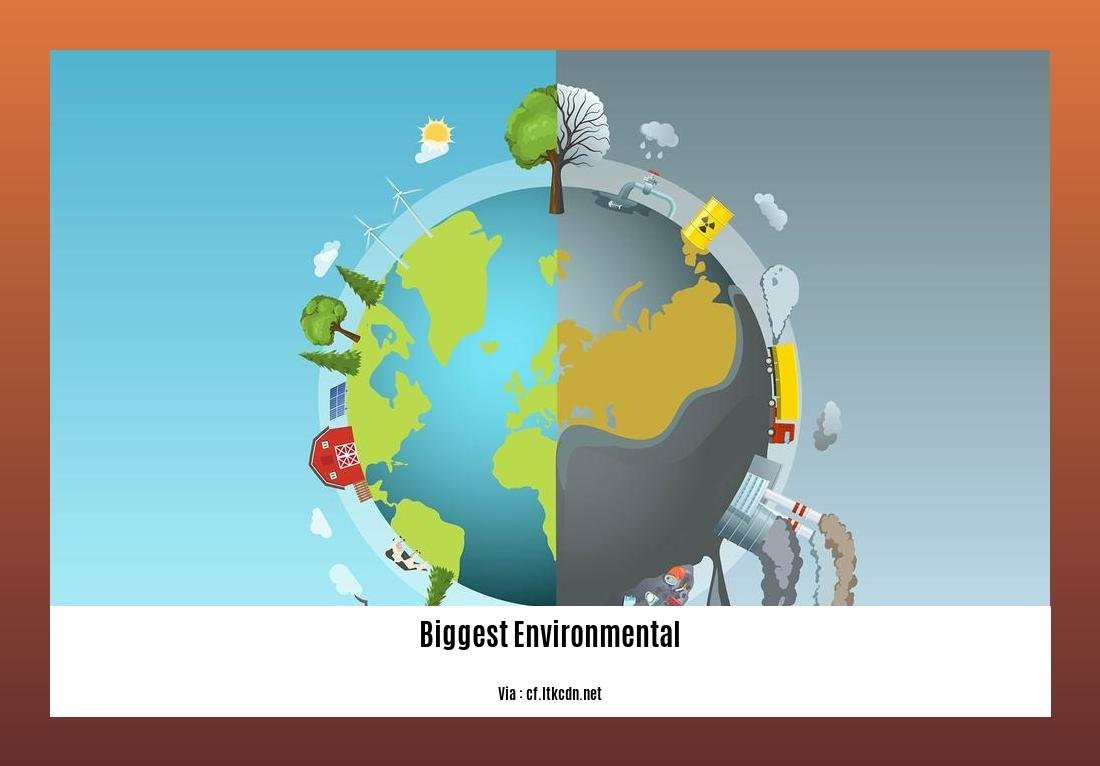
Climate change and extreme weather events are growing concerns globally, and the Philippines is not exempt. Climate change refers to long-term shifts in temperature, precipitation patterns, and wind patterns, which have a significant impact on the environment and human lives. Extreme weather events, on the other hand, include phenomena like hurricanes, typhoons, floods, droughts, and heatwaves that have become more intense and frequent due to climate change.
Understanding the Impact
The Philippines, being an archipelago, is particularly vulnerable to the effects of climate change and extreme weather events. Rising sea levels pose a threat to coastal areas, leading to erosion, coastal flooding, and salinization of freshwater sources. The country also experiences an increasing number of powerful typhoons and heavy rainfall, resulting in devastating floods and landslides that claim lives and destroy infrastructure.
Causes and Contributing Factors
The causes of climate change and extreme weather events are multifaceted. Human activities such as burning fossil fuels, deforestation, and industrial emissions release greenhouse gases into the atmosphere, trapping heat and causing the Earth’s temperature to rise. Changes in land use, such as deforestation and urbanization, also disrupt natural ecosystems and aggravate the impact of extreme weather events.
Implications for the Philippines
The consequences of climate change and extreme weather events in the Philippines are far-reaching. Loss of lives, displacement of communities, and destruction of homes and infrastructure are some of the immediate impacts. Additionally, extreme weather events affect agriculture, leading to crop failure and food insecurity. The Philippines’ biodiversity is also under threat, with rising temperatures, coral bleaching, and loss of habitats endangering numerous species.
Mitigation and Adaptation Measures
To address these challenges, the Philippines has been actively pursuing climate change mitigation and adaptation measures. These include the development of renewable energy sources, reforestation efforts, and the promotion of sustainable agricultural practices. Implementing early warning systems, enhancing disaster preparedness, and integrating climate change considerations into urban planning are crucial steps towards building resilience to extreme weather events.
Key Takeaways:
- Climate change and extreme weather events pose significant challenges to the Philippines.
- Rising sea levels, powerful typhoons, and heavy rainfall contribute to coastal erosion, floods, and landslides.
- Human activities like burning fossil fuels and deforestation are major causes of climate change.
- Impacts include loss of lives, displacement of communities, destruction of infrastructure, and threats to biodiversity.
- Mitigation and adaptation measures, such as renewable energy development and disaster preparedness, are essential for building resilience.
Sources:
– Philippine Climate Change Assessment Report 2019
– Climate Change Commission of the Philippines
Loss of Biodiversity
The Philippines, with its abundant biodiversity and unique ecosystems, is facing a grave environmental problem – the loss of biodiversity. The rich and diverse flora and fauna that once thrived in this beautiful archipelago are now under threat, putting the delicate balance of nature at risk. In this article, we will delve into the causes and consequences of this pressing issue and explore potential solutions to preserve the country’s invaluable natural heritage.
The Extent of the Problem
Loss of biodiversity refers to the decline in the variety and abundance of plant and animal species in a particular area. The Philippines, known as one of the world’s biodiversity hotspots, harbors numerous endemic species found nowhere else on Earth. However, human activities and environmental factors have led to a rapid decline in the country’s biodiversity.
1. Habitat Destruction: Deforestation, driven by practices such as illegal logging, agricultural expansion, and urbanization, has resulted in the destruction of critical habitats for many species. As a consequence, numerous plants and animals face the risk of extinction.
2. Overexploitation: The unsustainable hunting, fishing, and harvesting of wild species for commercial purposes have significantly depleted populations, pushing many species towards the brink of extinction.
3. Pollution: Water and air pollution pose significant threats to biodiversity.Industrial activities, poor waste management, and inadequate sanitation systems contribute to water pollution, harming aquatic ecosystems and the species that depend on them. Meanwhile, air pollution from vehicle emissions, industrial activities, and burning fossil fuels poses health risks to both humans and wildlife.
4. Climate Change: Rising temperatures and extreme weather events, induced by climate change, pose a grave threat to biodiversity. Coral bleaching, habitat loss, and shifts in species distribution patterns are just some of the consequences of a changing climate that affect the delicate balance of ecosystems in the Philippines.
The Consequences of Biodiversity Loss
The loss of biodiversity in the Philippines has far-reaching consequences, affecting ecosystems, human livelihoods, and future generations. When species disappear, ecosystems become imbalanced, leading to potential cascading effects throughout the food chain. This imbalance can disrupt ecosystem services that are vital for our survival, such as pollination, water filtration, and carbon sequestration.
Furthermore, the loss of biodiversity can also have economic implications. Tourism, agriculture, and pharmaceutical industries heavily rely on the natural resources and unique biodiversity found in the Philippines. The disappearance of certain species and ecosystems can lead to financial losses and a decline in the country’s overall well-being.
Protecting Biodiversity: The Way Forward
To address the critical issue of biodiversity loss, concerted efforts from the government, civil society, and individuals are needed. Here are some potential solutions:
1. Conservation and Restoration: Establishing protected areas, such as national parks and marine sanctuaries, is crucial for safeguarding biodiversity. These areas provide refuge for threatened species and promote ecosystem resilience. Additionally, efforts to restore degraded habitats can help replenish biodiversity and ensure the survival of endangered species.
2. Sustainable Practices: Embracing sustainable practices, such as agroforestry and sustainable fishing, is essential to mitigate the impact of human activities on biodiversity. By adopting these practices, we can ensure the long-term viability of ecosystems and secure a sustainable future for the Philippines.
3. Education and Awareness: Raising awareness about the importance of biodiversity and its connection to our daily lives is key to inspiring action. Educational initiatives, campaigns, and community engagement can empower individuals to make conscious decisions that benefit the environment and preserve biodiversity.
4. Policy Changes: Stricter regulations and enforcement against activities that harm biodiversity, such as illegal logging and unsustainable fishing practices, are necessary. Government policies and incentives that promote sustainable practices and conservation efforts can provide the framework for protecting biodiversity effectively.
Key Takeaways:
- Loss of biodiversity in the Philippines is a pressing environmental issue with significant ecological and economic consequences.
- Habitat destruction, overexploitation, pollution, and climate change are the main drivers of biodiversity loss in the country.
- Biodiversity loss disrupts ecosystems, affects human livelihoods, and poses threats to future generations.
- Conservation and restoration, sustainable practices, education, awareness, and policy changes are key to protecting biodiversity in the Philippines.
Sources:
1. National Geographic: Biodiversity
2. World Wildlife Fund: Biodiversity
Plastic Waste and Marine Pollution
Plastic waste and marine pollution are among the most critical environmental problems in the Philippines. The country’s stunning coastlines and vibrant marine ecosystems are under threat due to the excessive use and improper disposal of plastic materials. This article aims to shed light on the devastating effects of plastic waste on marine life and highlight the urgent need for action.
The Problem of Plastic Waste
Plastic waste has become an epidemic, choking our oceans and endangering marine species. The Philippines is one of the world’s largest contributors to this crisis, with millions of single-use plastics being used and discarded daily. From plastic bottles and bags to food containers and straws, these items end up in rivers, lakes, and eventually, the vast ocean.
[Plastic waste] poses a significant threat to marine life. Sea turtles mistakenly perceive plastic bags as jellyfish and consume them, resulting in suffocation and death. Birds, fish, and mammals become entangled in plastic debris, causing injuries, amputations, and, ultimately, death. Beyond the immediate harm to animals, plastic waste also has long-term consequences by releasing harmful chemicals into the water, further endangering aquatic ecosystems.
The Impact on Marine Ecosystems
Marine pollution, primarily caused by plastic waste, has severe consequences for the health and sustainability of marine ecosystems. [Marine pollution] poses a danger to coral reefs, disrupting fragile ecosystems that provide habitat to countless marine species. Plastic debris blocks sunlight from reaching corals, which leads to coral bleaching and eventually death. The loss of coral reefs has devastating effects on marine biodiversity, as they support a vast array of marine life.
Furthermore, plastic waste breaks down over time into microplastics, tiny particles that are easily ingested by smaller marine organisms. These microplastics bioaccumulate in the food chain, eventually reaching human populations through the consumption of seafood. Through this mechanism, plastic waste can have far-reaching implications for both marine life and human health.
Steps Towards Solutions
Addressing the issue of plastic waste and marine pollution requires a multi-faceted approach involving individuals, communities, industries, and government. Here are some steps that can be taken to combat this pressing environmental problem:
-
Reduce, Reuse, and Recycle: Encourage individuals to reduce their dependence on single-use plastics by using reusable alternatives and embracing recycling practices.
-
Strengthen Waste Management: Improve waste management systems by implementing proper segregation, recycling facilities, and waste collection infrastructure.
-
Raise Awareness: Educate the public about the harmful effects of plastic waste on marine life and promote behavior change through targeted awareness campaigns.
-
Support Sustainable Policies: Advocate for the implementation and enforcement of policies that ban or regulate single-use plastics and promote sustainable alternatives.
-
Promote Innovation: Support research and development of sustainable packaging materials and alternative products that minimize environmental impact.
-
Clean-Up Initiatives: Organize community-driven clean-up activities to remove plastic waste from beaches, rivers, and other vulnerable areas.
Key Takeaways:
- Plastic waste and marine pollution are significant environmental problems in the Philippines.
- Excessive plastic use and improper disposal pose serious threats to marine life and ecosystems.
- Plastic waste harms marine animals through entanglement and ingestion, while also leading to long-term chemical contamination.
- Marine pollution disrupts coral reefs, leading to coral bleaching and loss of biodiversity.
- Individuals, communities, industries, and government must work together to address plastic waste.
- Solutions include reducing plastic use, improving waste management, raising awareness, supporting sustainable policies, promoting innovation, and organizing clean-up initiatives.
Sources:
- National Geographic – Philippine plastic pollution problem
- World Wildlife Fund – Marine pollution in the Philippines
FAQ
Q1: What are the main causes of deforestation in the Philippines?
A1: The main causes of deforestation in the Philippines include illegal logging, agricultural expansion, and urbanization.
Q2: How does water pollution affect the Philippines?
A2: Water pollution in the Philippines affects aquatic ecosystems, poses risks to human health, and hinders sustainable economic development.
Q3: What are the major sources of air pollution in the Philippines?
A3: The major sources of air pollution in the Philippines include vehicle emissions, industrial activities, and the burning of fossil fuels.
Q4: How does climate change impact the Philippines?
A4: Climate change impacts in the Philippines include rising sea levels, increased frequency of extreme weather events, and coral bleaching, which pose significant threats to coastal communities, agriculture, biodiversity, and national resilience.
Q5: What are the challenges in waste management faced by the Philippines?
A5: Inadequate waste management practices, such as improper disposal, open dumping, and limited recycling facilities, contribute to the country’s mounting waste problem, leading to environmental pollution, health hazards, and challenges in managing the increasing volume of solid waste.
